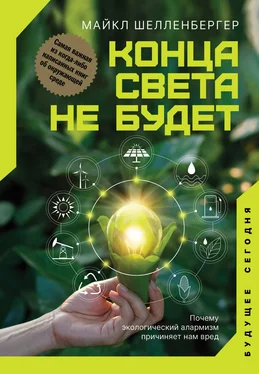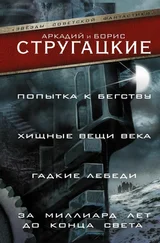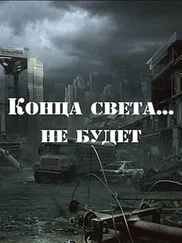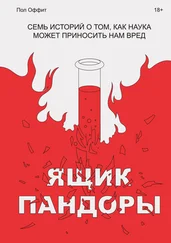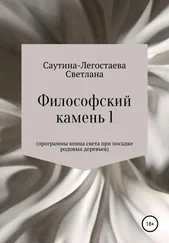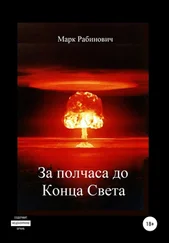W. C. Li, H. F. Tse, and L. Fok, “Plastic Waste in the Marine Environment: A Review of Sources, Occurrence and Effects,” Science of the Total Environment 566–567 (2016): 333–49, http://dx.doi.org/10.1016/j.scitotenv.2016.05.084.
L. Lebreton, B. Slat, F. Ferrari et al., “Evidence That the Great Pacific Garbage Patch Is Rapidly Accumulating Plastic,” Scientific Reports, 2018, no. 8 (March 22, 2018), article no. 4666, https://doi.org/10.1038/s41598-018-22939-w.
Christine Figgener (sea turtle biologist) in conversation with the author, November 6, 2019.
Christine Figgener (sea turtle biologist) in conversation with the author, November 6, 2019.
“Facts and Figures About Materials, Waste and Recycling,” Environmental Protection Agency, October 30, 2019, accessed January 2, 2019, https://www.epa.gov/facts-and-figures-about-materials-waste-and-recycling/plastics-material-specific-data#PlasticsTableandGraph.
Changing the Way We Use Plastics, European Commission, 2018, https://ec.europa.eu/environment/waste/pdf/pan-european-factsheet.pdf.
Christine Figgener (sea turtle biologist) in conversation with the author, November 6, 2019.
Mike Ives, “China Limits Waste. ‘Cardboard Grannies’ and Texas Recyclers Scramble,” New York Times, November 25, 2017, https://www.nytimes.com.
Mike Ives, “Recyclers Cringe as Southeast Asia Says It’s Sick of the West’s Trash,” New York Times, June 7, 2019, https://www.nytimes.com.
Mike Ives, “Recyclers Cringe as Southeast Asia Says It’s Sick of the West’s Trash,” New York Times, June 7, 2019, https://www.nytimes.com.
Motoko Rich, “Cleansing Plastic from Oceans: Big Ask for a Country That Loves Wrap,” New York Times, June 27, 2019, https://www.nytimes.com.
Roland Geyer et al., “Production, use, and fate of all plastics ever made,” Science Advances 3, no. 7 (July 19, 2017), http://advances.sciencemag.org/content/3/7/e1700782.
Christine Figgener (sea turtle biologist) in conversation with the author, November 6, 2019.
Harvey Black, “Rethinking Recycling,” Environmental Health Perspectives 103, no. 11 (1995): 1006–1009, https://www.ncbi.nlm.nih.gov/pmc/articles/PMC1519181/pdf/envhper00359-0034-color.pdf.
Benjamin Brooks, Kristen Hays, and Luke Milner, Plastics recycling: PET and Europe lead the way, Petrochemicals special report (S&P Global Platts, September 2019), https://www.spglobal.com/platts/plattscontent/_assets/_files/en/specialreports/petrochemicals/plastic-recycling-pet-europe.pdf.
Daniel Hoornweg and Perinaz Bhada-Tata, What a Waste: A Global Review of Solid Waste Management, World Bank Urban Development Series, Knowledge Papers no. 15, March 2012, https://openknowledge.worldbank.org/bitstream/handle/10986/17388/68135.pdf?sequence=8&isAllowed=y/, 46.
Jambeck et al., “Plastic Waste Inputs from Land into the Ocean.”
Marcus Eriksen, Laurent C. M. Lebreton, Henry S. Carson et al., “Plastic Pollution in the World’s Oceans: More than 5 Trillion Plastic Pieces Weighing over 250,000 Tons Afloat at Sea,” PLOS ONE 9, no. 12 (December 10, 2014): e111913, https://journals.plos.org/plosone/article/file?id=10.1371/journal.pone.0111913&type=printable. As indicated in the title, the authors’ final estimate of the total number of plastic pieces in the ocean came in at 5 trillion particles – both macroplastic and microplastic – weighing 269,000 tons.
Marcus Eriksen, Laurent C. M. Lebreton, Henry S. Carson et al., “Plastic Pollution in the World’s Oceans: More than 5 Trillion Plastic Pieces Weighing over 250,000 Tons Afloat at Sea,” PLOS ONE 9, no. 12 (December 10, 2014): e111913, https://journals.plos.org/plosone/article/file?id=10.1371/journal.pone.0111913&type=printable. As indicated in the title, the authors’ final estimate of the total number of plastic pieces in the ocean came in at 5 trillion particles – both macroplastic and microplastic – weighing 269,000 tons.
Marcus Eriksen, Laurent C. M. Lebreton, Henry S. Carson et al., “Plastic Pollution in the World’s Oceans: More than 5 Trillion Plastic Pieces Weighing over 250,000 Tons Afloat at Sea,” PLOS ONE 9, no. 12 (December 10, 2014): e111913, https://journals.plos.org/plosone/article/file?id=10.1371/journal.pone.0111913&type=printable. As indicated in the title, the authors’ final estimate of the total number of plastic pieces in the ocean came in at 5 trillion particles – both macroplastic and microplastic – weighing 269,000 tons.
Marcus Eriksen, Laurent C. M. Lebreton, Henry S. Carson et al., “Plastic Pollution in the World’s Oceans: More than 5 Trillion Plastic Pieces Weighing over 250,000 Tons Afloat at Sea,” PLOS ONE 9, no. 12 (December 10, 2014): e111913, https://journals.plos.org/plosone/article/file?id=10.1371/journal.pone.0111913&type=printable. As indicated in the title, the authors’ final estimate of the total number of plastic pieces in the ocean came in at 5 trillion particles – both macroplastic and microplastic – weighing 269,000 tons.
Collin P. Ward, Cassia J. Armstrong, Anna N. Walsh, Julia H. Wash, and Christopher M. Reddy, “Sunlight Converts Polystyrene to Carbon Dioxde and Dissolved Organic Carbon,” Environmental Science Technology Letters 6, no. 11 (October 10, 2019): 669–674, https://doi.org/10.1021/acs.estlett.9b00532.
“Sunlight Degrades Polystyrene Faster than Expected,” National Science Foundation, October 18, 2019, https://www.nsf.gov/discoveries/disc_summ.jsp?cntn_id=299408&org=NSF&from=news.
Collin P. Ward, “Sunlight Converts Polystyrene to Carbon Dioxide and Dissolved Organic Carbon.”
Collin P. Ward, “Sunlight Converts Polystyrene to Carbon Dioxide and Dissolved Organic Carbon.”
Emily A. Miller, Loren McClenachan, Roshikazu Uni et al., “The Historical Development of Complex Global Trafficking Networks for Marine Wildlife,” Science Advances 5, no. 3 (March 2019): eaav5948, http://dx.doi.org/10.1126/sciadv.aav5948.
Martha Chaiklin, “Imports and Autarky: Tortoiseshell in Early Modern Japan,” in Luxury and Global Perspective: Objects and Practices, 1600–2000, edited by Bernd-Stefan Grewe and Karen Hoffmeester (Cambridge, UK: Cambridge University Press, 2016), 218–21, 230, 236.
Martha Chaiklin, “Imports and Autarky: Tortoiseshell in Early Modern Japan,” in Luxury and Global Perspective: Objects and Practices, 1600–2000, edited by Bernd-Stefan Grewe and Karen Hoffmeester (Cambridge, UK: Cambridge University Press, 2016), 218–21, 230, 236.
Stephanie E. Hornbeck, “Elephant Ivory: An Overview of Changes to Its Stringent Regulation and Considerations for Its Identification,” AIC Objects Specialty Group Postprints 22 (2015): 101–22, http://resources.conservation-us.org/osg-postprints/wp-content/uploads/sites/8/2015/05/osg022-08vII.pdf.
Stephanie E. Hornbeck, “Elephant Ivory: An Overview of Changes to Its Stringent Regulation and Considerations for Its Identification,” AIC Objects Specialty Group Postprints 22 (2015): 101–22, http://resources.conservation-us.org/osg-postprints/wp-content/uploads/sites/8/2015/05/osg022-08vII.pdf.
Читать дальше
